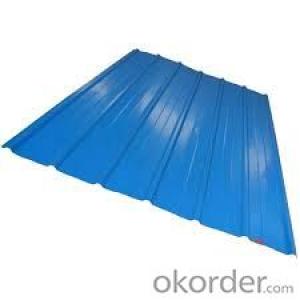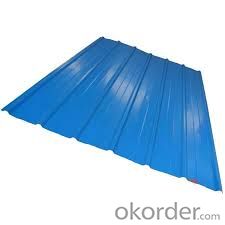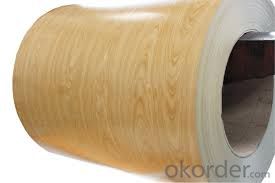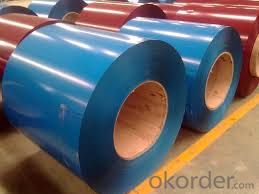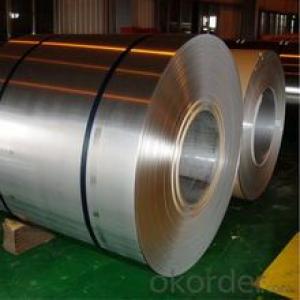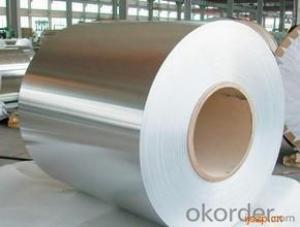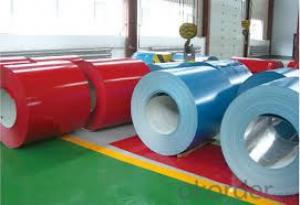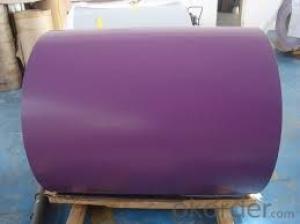PPGI/Pre-Painted Color Coated Galvanized Steel Coil/PPGI/China PPGI for Roof Sheet
- Loading Port:
- China main port
- Payment Terms:
- TT OR LC
- Min Order Qty:
- 25 m.t.
- Supply Capability:
- 1000 m.t./month
OKorder Service Pledge
OKorder Financial Service
You Might Also Like
Product Description
Product Description
| PRODUCT SPECIFICATION |
Commodity | Prepainted galvanized steel coil |
Base Metal |
|
| 0.16 TO 1.00 mm |
Width | 600 TO 1500 mm |
Coil ID | 508 / 610 mm |
Type | coil/sheet/strips |
|
|
| Soft, medium,full hard |
Zinc Coating | Z 40-275 gsm, AZ 40-180 gsm or as customer requirements |
Types of top coating |
|
| As per RAL shades/customer requirements. |
Surface Finishes | Glossy and Matte |
Price: | US $600-800 / Metric Ton |
Slits | 37mm and above |
Standards | AISI, ASTM, BS, DIN, GB, JIS |
Transport | By bulk or container |
Packing | Standard packing or at buyer's requirement |
Applications:
Pre-painted steel metal products are used in a vast array of applications including:
1.construction industry
2. household appliances
3.automotive
4.industrial applications
5.packaging
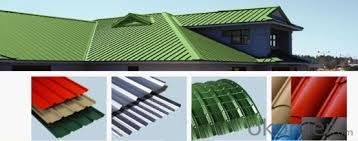
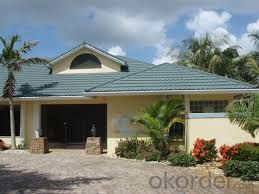
FAQ
What is the validity of your quotation?
Normally 2 days.
- Q: How are steel coils used in various industries?
- Steel coils are used in various industries for their durability and versatility. They are commonly used in automotive, construction, and manufacturing industries for making structures, machinery, and appliances. Steel coils are also utilized in the energy sector for producing power generation equipment and in the transportation industry for making ships and railcars. Overall, steel coils play a significant role in providing strength and reliability in a wide range of industrial applications.
- Q: A friends of mine says he has balls of steel and i told him i would melt em off with lava. He said it wouldnt work. i disagree
- Standard steel melts around 1400-1500 C. Erupting lava can be as hot as 1600 C. There are various types of steel with different melting points though, and the temperature of lava varies widely, so your question can't really be answered definitively. Some lava is definitely hot enough to melt steel though, so you are right and your friend is wrong. :)
- Q: What are the different methods of uncoiling steel coils?
- Uncoiling steel coils can be done in several ways, depending on the specific requirements and available equipment. Some commonly used methods are: 1. Manual uncoiling: This method involves manually unwinding the coil using a bar or rod inserted through the inner diameter. It is suitable for smaller coils or when other methods are not accessible. 2. Mandrel uncoiling: A mandrel, a cylindrical tool, supports the inner diameter of the coil and enables free rotation. The coil is placed on the mandrel and rotated to unwind the steel. 3. Decoiler machine uncoiling: Designed specifically for uncoiling steel coils, these machines consist of a mandrel or drum to hold the coil. They also include a motorized mechanism to control the speed of unwinding. Decoilers are suitable for larger and heavier coils, making them ideal for industrial applications. 4. Straightener-feeder uncoiling: This method is utilized when the steel coil needs to be straightened and fed into a production line simultaneously. The coil passes through straightening rollers to remove any curvature before being fed into the subsequent processing equipment. 5. Recoiler uncoiling: Recoilers are used when the steel coil needs to be rewound into a new coil. The original coil is uncoiled using one of the previously mentioned methods, and then the steel is rewound onto a new mandrel or drum to create a smaller coil. It is important to consider factors such as the size and weight of the coil, desired level of automation, and specific production requirements when choosing an uncoiling method.
- Q: Is the product of mild steel environmentally friendly? does it produce any emissions?The same question for leather aswell.
- Steel just rusts, it doesn't produce any emissions just sitting there. They even make architectural steel called Corten to rust to a nice patina. If you consider how the steel was made in the first place, a great big NO! Steel making requires massive amounts of electricity plus it gives off some nasty fumes in the liquid state. Leather itself doesn't emit much of anything, but the dyes might. Again though, if you look at how it's made, tanning leather is right up there with steel mills and paper mills for pollution, some of the worst.
- Q: What is the average shelf life of a steel coil?
- The average shelf life of a steel coil can vary depending on various factors such as the type of steel, storage conditions, and maintenance practices. However, on average, a steel coil can have a shelf life of around 6 to 12 months if stored properly in a controlled environment with suitable temperature, humidity, and protection from corrosion. Regular inspection and maintenance can extend the shelf life of a steel coil further.
- Q: How do steel coils withstand extreme temperatures?
- Steel coils are able to withstand extreme temperatures due to the unique properties of steel. Firstly, steel has a high melting point, allowing it to maintain its structural integrity even at extremely high temperatures. Additionally, steel has excellent thermal conductivity, which enables it to evenly distribute and dissipate heat. Furthermore, steel undergoes various heat treatment processes during manufacturing, such as quenching and tempering, which enhance its strength and resistance to temperature fluctuations. Overall, these factors make steel coils highly capable of withstanding extreme temperatures.
- Q: How are steel coils processed and shaped for specific applications?
- Steel coils are processed and shaped for specific applications through a series of manufacturing processes. These processes typically include cleaning, pickling, cold rolling, annealing, and slitting. Cleaning removes any surface impurities, pickling removes scale and oxides, cold rolling reduces the thickness and enhances the strength, annealing improves ductility and reduces hardness, and finally, slitting cuts the coils into desired widths. These steps ensure that steel coils are transformed into the appropriate shape and size required for specific applications, such as in construction, automotive, or manufacturing industries.
- Q: How are steel coils used in the agricultural industry?
- Steel coils are commonly used in the agricultural industry for various purposes, such as manufacturing equipment like plows, harrows, and cultivators. They are also used for constructing storage structures like grain bins, as well as fencing and livestock enclosures. Additionally, steel coils are used in the construction of agricultural machinery and vehicles, ensuring durability and strength in demanding farming conditions.
- Q: How are steel coils inspected for surface finish after processing?
- Steel coils are typically inspected for surface finish after processing using visual and tactile methods. Trained inspectors visually examine the coils for any imperfections, such as scratches, dents, or uneven coating. They also run their fingers over the surface to detect any irregularities. Additionally, advanced technologies like digital imaging systems and laser scanners are employed to provide accurate and detailed analysis of the surface finish.
- Q: Why can't you use a lead shot only choke with steel shot or a steel shot only choke with lead shot? I have used a lead only choke with steel shot and my shotgun shot fine and there was no damage to the choke.
- You should not have done this. It not a matter of shooting fine - it's a question of getting the correct distance and shot pattern SAFELY. Lead only chokes squeeze the lead shot a considerable bit. Lead is compressive and soft - it takes more squeeze to get the correct patterns from a shotgun. Steel only chokes do not squeeze as much as the lead version because the steel is very had and does not compress well. When you accidentally shoot lead through a steel chock the pattern will be weird. But, it usually is not an unsafe condition. However, steel through a lead choke will cause unsafe pressure at the choke and can explode. You end up with a bugs bunny/road runner cartoon looking shotgun! Most gun shops all over the USA are decorated with these blown up shotguns from people doing exactly what you did. Unless you want to add yours to the other dead gun collection in some shop - I recommend you take your shotgun and all your chokes into a gun smith and have him look it all over. See if anything is out of tolerance. Guns are not fool proof. If you do not follow the instructions and operate them safely they will blow up and tear a piece of your body off. Just ask any ER doctor or long time shooter.
Send your message to us
PPGI/Pre-Painted Color Coated Galvanized Steel Coil/PPGI/China PPGI for Roof Sheet
- Loading Port:
- China main port
- Payment Terms:
- TT OR LC
- Min Order Qty:
- 25 m.t.
- Supply Capability:
- 1000 m.t./month
OKorder Service Pledge
OKorder Financial Service
Similar products
Hot products
Hot Searches
Related keywords
